
England’s largest reenactment society has been slugging it out since 1968
[caption id="adayinthelifeofthesealedKnot_Feature" align="aligncenter" width="1024"]
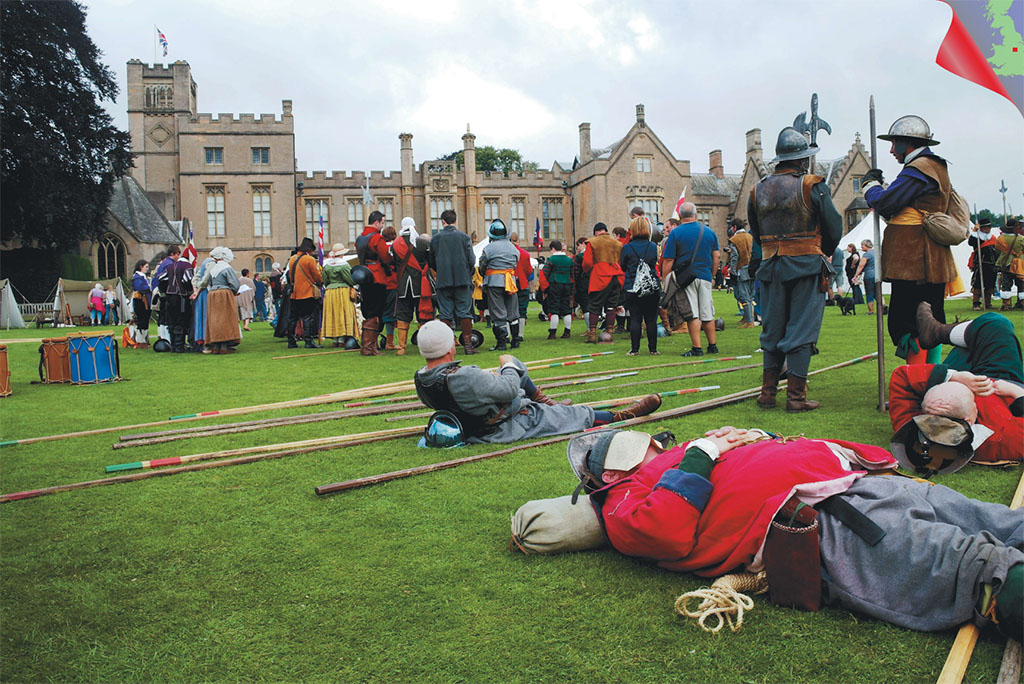
King against country. Neighbor against neighbor. Brother against brother.
The English Civil War, fought between 1642 and 1649, is a complicated but colorful period in British history. It ultimately saw the execution of King Charles I and an 11-year period where Britain was no longer ruled by a monarch. Charles may no longer have a head—nor does his vanquisher, Oliver Cromwell—but that doesn’t stop the battles between crown and Parliament being fought in the present day. Thankfully, there’s no longer any bloodshed, and the combatants are likely to be caught sharing a beer at the end of the day!
The Sealed Knot is Britain’s biggest reenactment society, with frequent gatherings ranging from small regimental displays to major musters such as the one at Newstead Abbey in Nottinghamshire, ancestral home of the Byron family. The sixth Baron Byron—him of the poems—is not Newstead’s star attraction when the Sealed Knot comes to visit. Of more relevance is his predecessor, the first Baron Byron, a Royalist commander during the Civil War.
Newstead Abbey provides a magnificent backdrop to the festivities. All the action takes place outdoors in the gardens; tents line the lush green grass and Sealed Knot members congregate, catching up on news and sharing their common interest in the Civil War. Members of the public receive a warm welcome, there’s none of the wary suspicion with which Royalist or Parliamentarian would have eyed outsiders 370 years ago.
[caption id="adayinthelifeofthesealedKnot_img1" align="aligncenter" width="1024"]

My guide through the camp is Sarah Dukes, who is dressed, like most members of the Sealed Knot, in period costume. “It’s really like no other hobby in the world,” Sarah explains. “It’s totally different from 21st-century life. It’s like stepping back in time.”
The Sealed Knot was formed in 1968 by Brigadier Peter Young, veteran of World War II and military historian. He gathered a group of friends in Civil War dress to mark the publication of his book on the Battle of Edgehill. They had such a good time that the Sealed Knot was founded as a dedicated Civil War reenactment society. It quickly snowballed and took on a membership of thousands.
“Peter Young was very much a scholar as well as a soldier,” says Dukes. “Nobody had researched the clothes, the footwear or the headgear that people wore during the Civil War period. As a re-enactor, you have to know these things. After the Sealed Knot was formed, there was a massive explosion in research and understanding in studies of the English Civil War.”
[caption id="adayinthelifeofthesealedKnot_img2" align="aligncenter" width="789"]
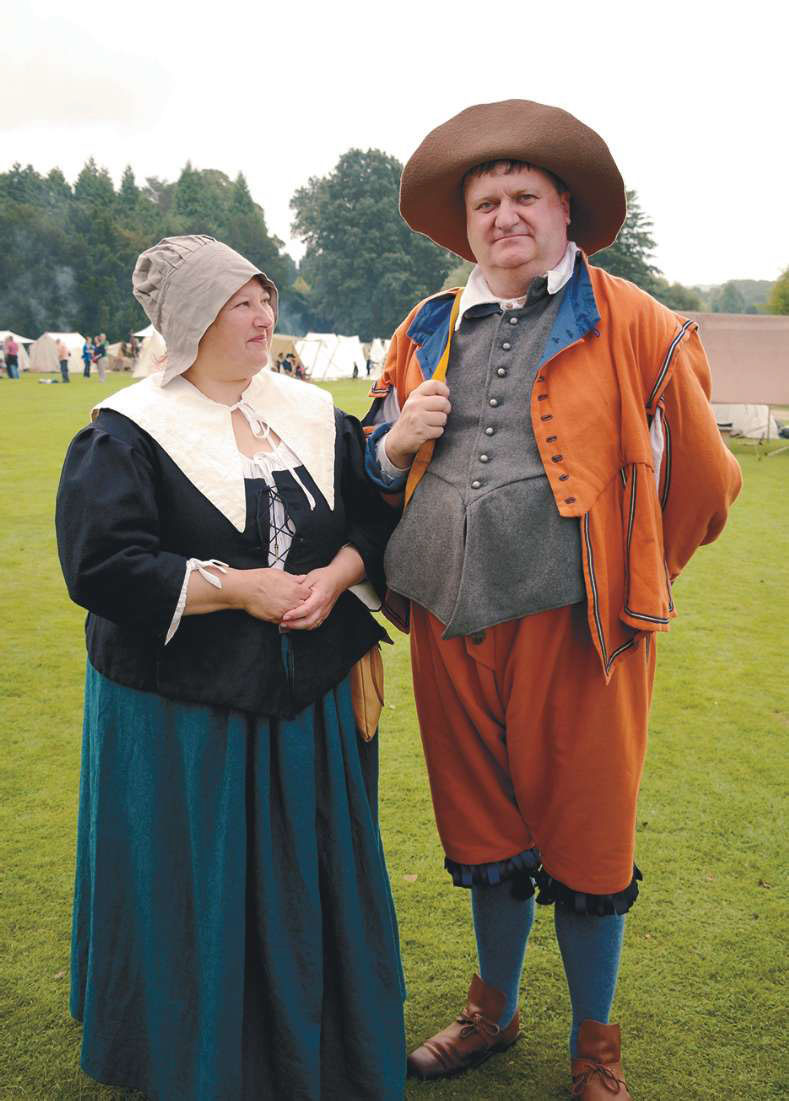
The social history of the 17th century is now so well understood that the Sealed Knot is able to put on events like this, demonstrating what life was like for those who were caught up in Britain’s most destructive civil war.
“The living history camp is open for the public to wander around.” Dukes waves a hand as she points out some of the different tents. “You can smell what is cooking, see a wood turner, a barber-surgeon, people spinning thread and various other crafts. Some people have learned the skills through the society; others learned them elsewhere and have translated them into the 17th century.” A great deal of planning and preparation goes into making things just right.
“The tents are authentic, as are the clothes and all the equipment in the camp. We don’t walk around with modern watches and phones. You’ll see people with glasses on, but a lot of the time they are authentic, made by a company that can put a prescription into glasses from the period. We have water in plastic bottles, but they’ll be kept out of sight.”
Such rigorous attention to detail adds to the appeal of the living history camp—it feels like you have been transported to another era. A church service gathers around a small wooden cross, soldiers and camp followers taking part in a service from the 1604 Book of Common Prayer. Babies and children are pulled around in cute wooden trucks, just as their forebears would have been. Regiments drill in formation. A few men practice sword skills, while members of the public wander in the middle of it all, taking photographs and reveling in the atmosphere.
FINDING THE KNOT
The Sealed Knot has a comprehensive website giving details of their events, whether large musters like the one at Newstead Abbey or smaller regimental events. You can find the website at thesealedknot.org.uk.
For those who want to go a step further and wield a pike or musket in battle, the Sealed Knot welcomes new members—even those from as far away as North America. Some members are recruited by friends or family into a particular regiment, some decide that they want to be a Royalist or Parliamentarian. If you have no real preference, the society will do its best to match you to a regiment that they think you will enjoy!
What surprises me is how friendly everybody is. Offer a word of greeting or make eye contact with one of the Sealed Knot members and they’ll likely invite you over and explain what they are doing. Visitors are just as welcome as Sealed Knot members.
“It’s very important for us to interact with the public,” Dukes explains. “People are very interested in what we are doing and many of our members enjoy helping them to understand it better. We also go into schools to help teach children about the Civil War and work quite a lot with archaeologists studying the period.”
The living history camp is interesting enough in itself, but the centerpiece around which the muster revolves is the battle reenactment. In the early afternoon, a sense of quiet descends on the camp—the calm before the storm. Uniformed soldiers slink away to join their regiments. One of the few remaining behind to rest awhile in the camp is Ian Bailey. As Chief of Staff in the Army of Parliament, he’s the perfect man to describe what is about to happen.
[caption id="adayinthelifeofthesealedKnot_img3" align="aligncenter" width="1024"]
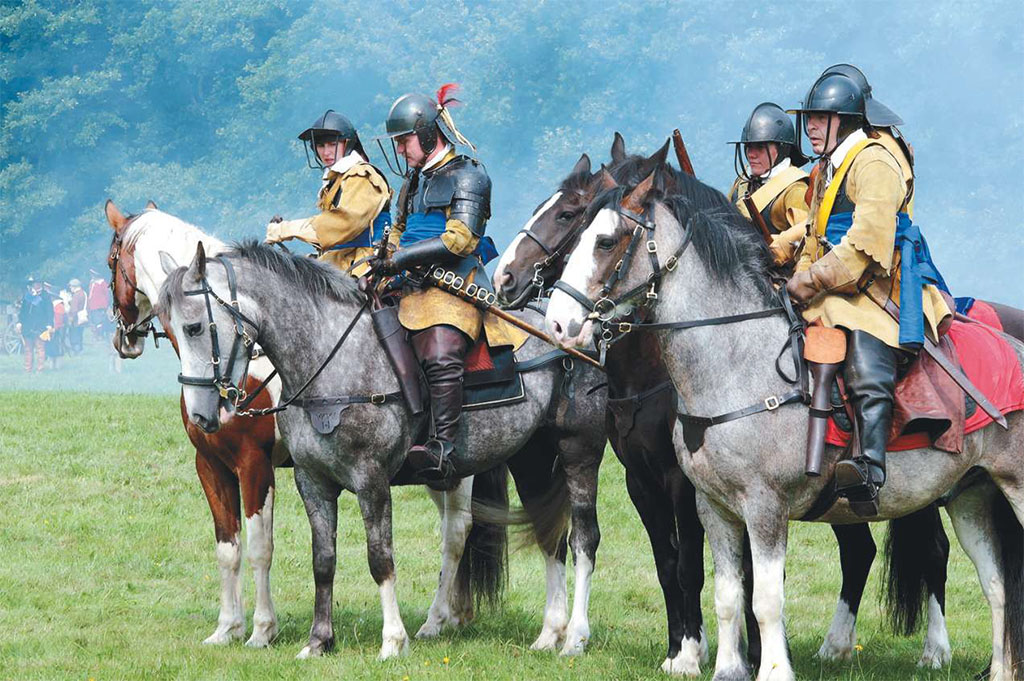
“We’ve already gone through the script, so we know who is going to win and how they are going to win,” Bailey reveals, “but when the armies engage, it becomes a free-for-all—the regimental commanders try to outmaneuver each other and gain the upper hand.”
[caption id="adayinthelifeofthesealedKnot_img4" align="aligncenter" width="1022"]
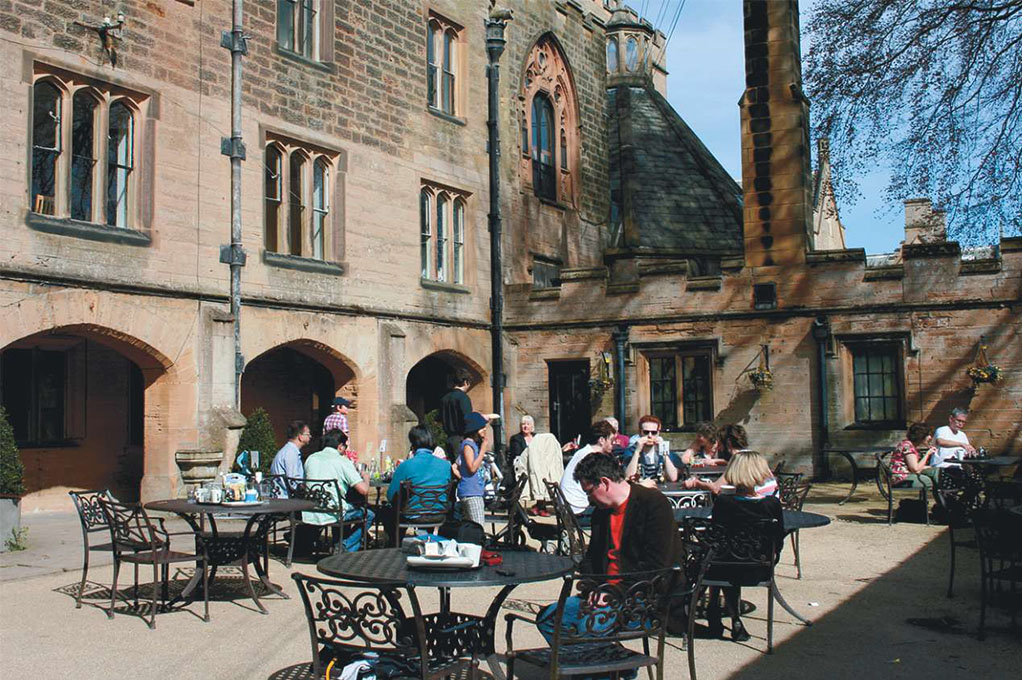
SOON, CROWDS ARE FLOCKING from the camp to a field at the rear of Newstead Abbey. Families throng the side and a few members of the Sealed Knot patrol the fence, answering questions, entertaining the crowd and making sure that nobody encroaches onto the battlefield.
A roving Royalist and peripatetic Parliamentarian appear with microphones to explain what is going on as the first soldiers march onto the field. King Charles spares a moment to exhort the public to rally to his cause—boom!—but as he speaks, Parliament’s cannon suddenly roars and a surprise attack is launched to try and capture the King.
It is the signal for the start of the battle proper. Royalist troops advance up the slope, hoping to capture the small redoubt at the top. The King is safe and continues to ride the field, encouraging his troops.
Musketeers try to pick each other off from distance, smoke rising from their guns and obscuring their targets. It was also a problem that their 17th-century precursors had to cope with—the fog of war was such that they often could not see who they were shooting at. This, coupled with the problem that the muskets were early, rudimentary models and difficult to use, meant that firearms were not ready to dominate the battlefield.
“Some people join the Sealed Knot because they have a particular interest in the muskets and want to learn how to fire them,” Bailey explains. “Then there are those who see the pike blocks and think that it’s the best contact sport out there!”
They’re probably not wrong—there’s no messing about fighting from a distance for the pike-men. Initially, they carry their weapons vertically, itself a feat of great strength and balance, but as they near enemy lines, their pikes are lowered and the two sides engage. This is hand-to-hand warfare at its most basic, the two sides pushing each other like a line of scrimmage on a football field, pikes rising back into the air again through brute force and sheer momentum.
There are no real casualties or deaths, though barber-surgeons prowl the edges of the battlefield and the crowd, aprons stained red with the mock blood of previous patients. The reenactment certainly conveys the chaos of a Civil War battlefield. Muskets crack, cannons boom, pike-men push, cavalry dash between them. Some of the soldiers are almost within touching distance of the onlookers.
[caption id="adayinthelifeofthesealedKnot_img5" align="aligncenter" width="1024"]
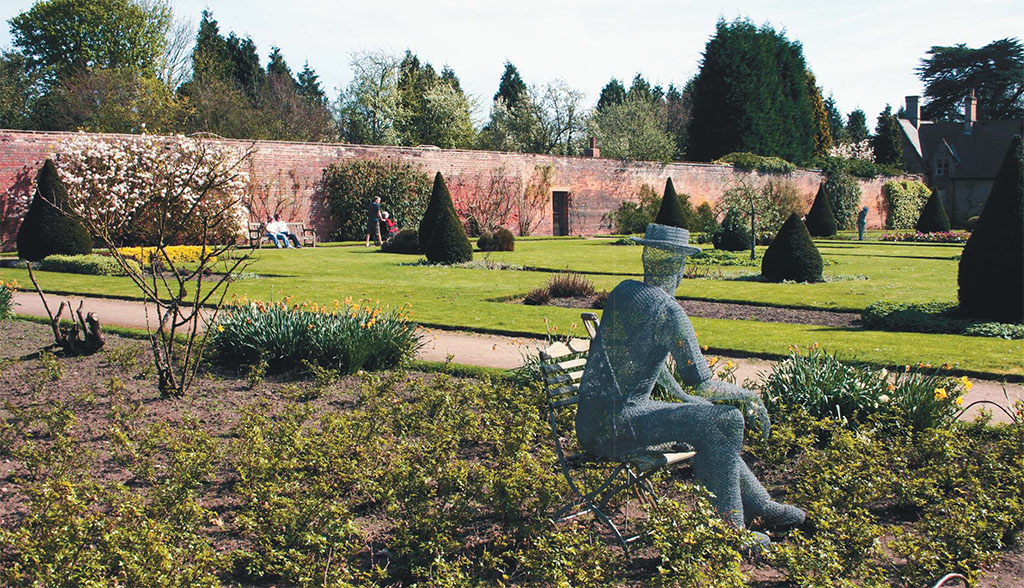
Eventually, after two failed attacks up the slope, the Royalists leave the battlefield. Their lines are still ordered and the soldiers are not routed, but there is no doubt that they have lost the day. Parliament is still in possession of the redoubt and its soldiers cheer. The members of the public on the sideline join them, all enrapt by the occasion.
“If we are somewhere where there was a particular battle, we try to make it historically accurate,” Bailey explains. “However, at an event like this one at Newstead where there was not a battle during the Civil War, Parliament might win on one day and the King might win on another.”
With the battle over, both public and Sealed Knot gather in the beer tent to toast the day’s success or failure, depending on their particular view of the conflict. Whether victor or loser, all seem to have a smile on their face.
“It’s good fun,” Dukes explains. “This is a nice group of people and we all get on. Your regiment is like your second family. Joining up is the best thing I ever did. If you love history, you can live it with the Sealed Knot!”
“It’s certainly an escape from the modern world,” Bailey agrees, “and I think that it’s vital vital that we preserve something that is important from our past.”
The Sealed Knot is not an insular society, obsessed by stuffy minutiae and forgetting its primary focus—to celebrate the past. It welcomes members of the public to its events and offers an unrivaled window on this particular era of British history. The beer tent will be busy until dusk and beyond. Perhaps the ranks will swell as more people are bitten by the reenactment bug and sign up to the Sealed Knot. And who knows, maybe tomorrow it will be King Charles celebrating victory at the Battle of Newstead!
[caption id="adayinthelifeofthesealedKnot_img6" align="aligncenter" width="789"]
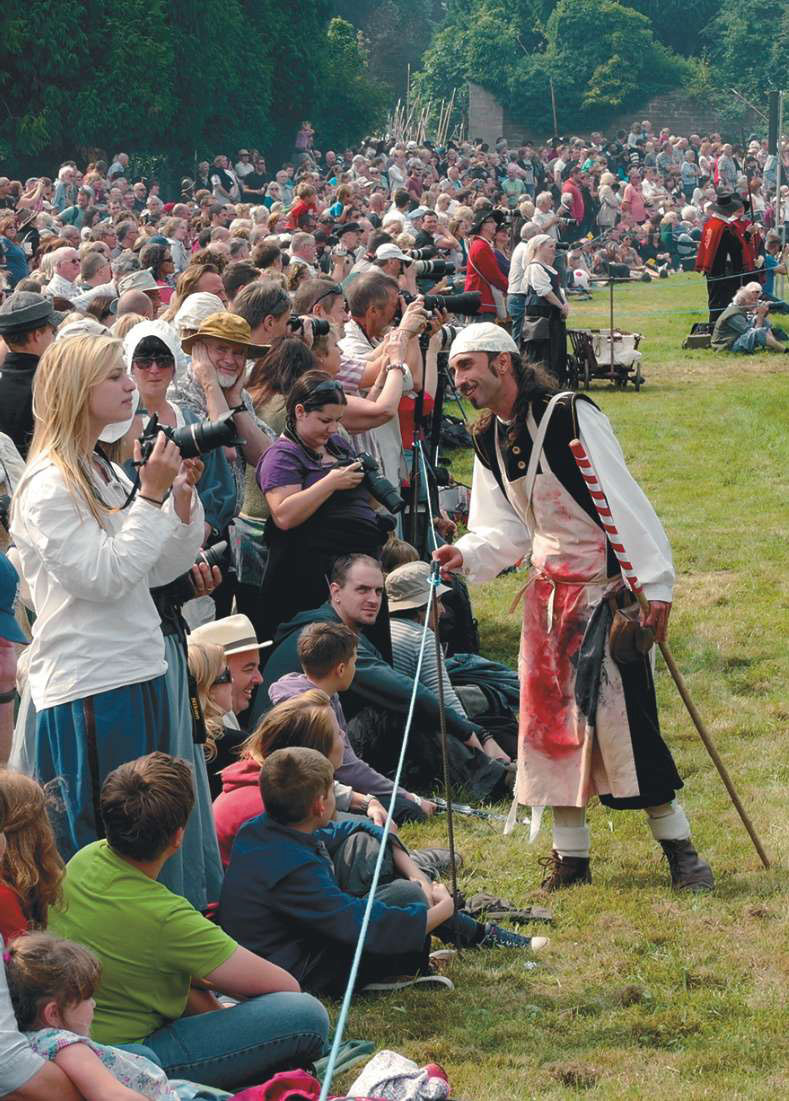
A SIMPLE GUIDE TO THE CIVIL WAR
The English Civil War arose out of disagreements about the nature of royal rule in England. King Charles I was a great believer in the Divine Right of Kings and thought that his power should be total and undiluted. Those in Parliament wanted a greater say and were particularly concerned bout Charles’ financial mismanagement, failures in war and marriage to a French Catholic.
By 1642, relations had broken down so far that both sides began to summon armed forces. The country was split, although many areas tended to support one or the other—London was on Parliament’s side; the west was with Charles.
The Royalists won many of the early battles, leading to Parliament creating the New Model Army under Thomas Fairfax and Oliver Cromwell. The momentum shifted and Charles was captured and imprisoned in 1646. It wasn’t Parliament’s intention to execute the King, but after he was found encouraging the Scots to invade his own country, he was put on trial for treason. After his execution, Cromwell was named Lord Protector and England began its short-lived republican experiment known as the Commonwealth.





Comments